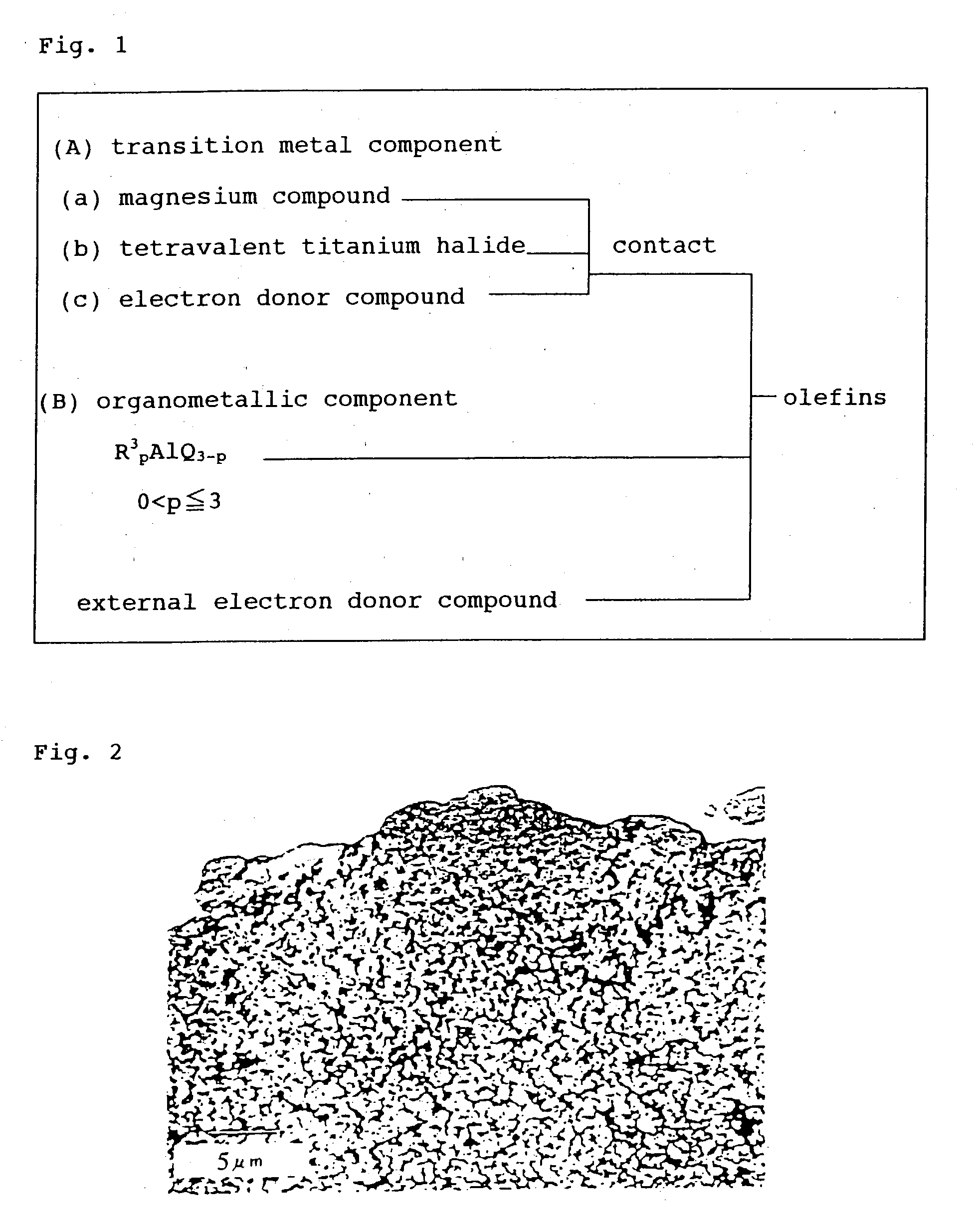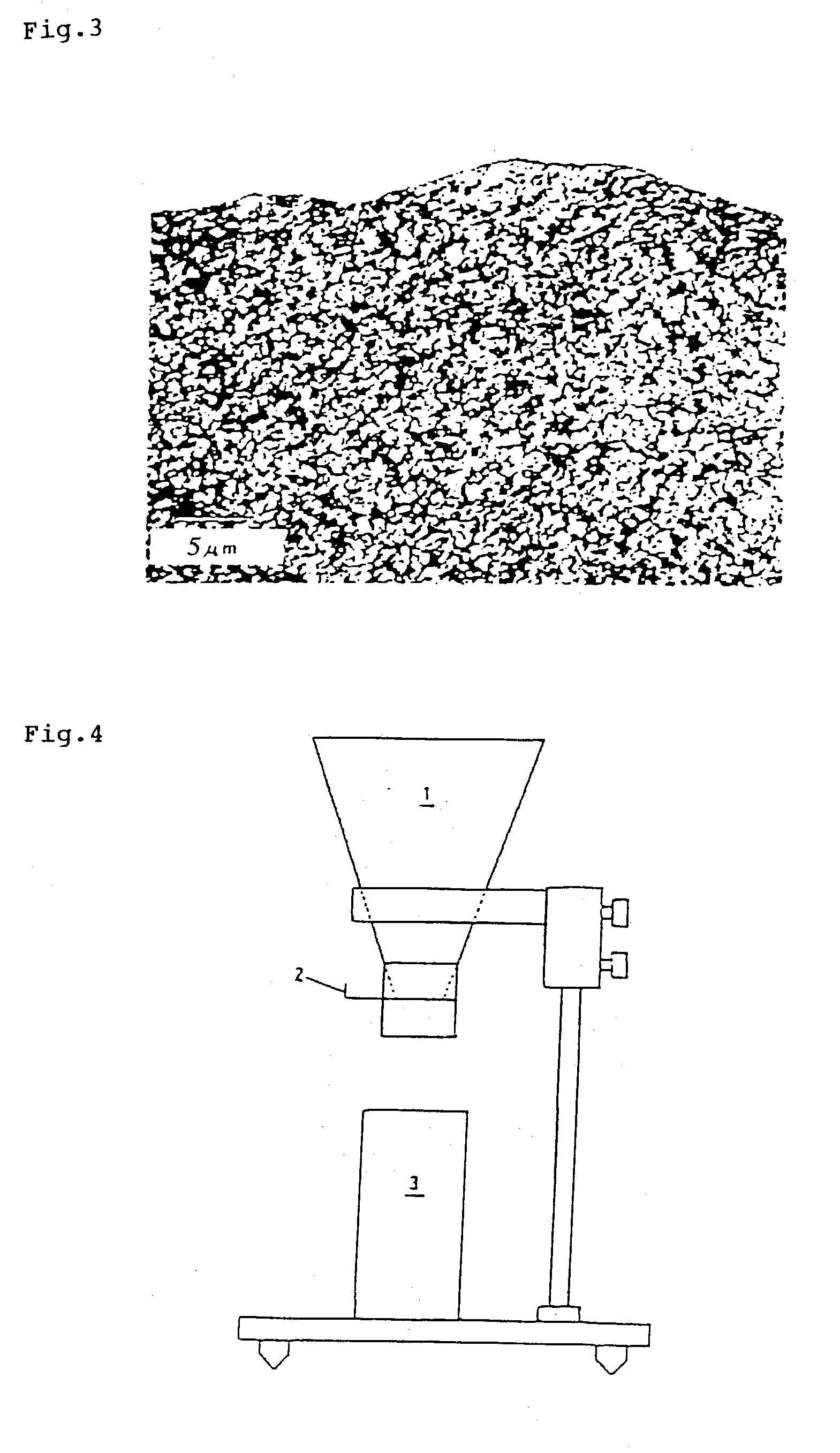Solid catalyst ingredient and catalyst each for olefin polymerization and propylene block copolymer
- Summary
- Abstract
- Description
- Claims
- Application Information
AI Technical Summary
Benefits of technology
Problems solved by technology
Method used
Image
Examples
example 1
[0092]
[0093] 100 g of iodine was dissolved in 1,000 ml of ethanol. The solution was heated and boiled while refluxing. A slurry of metallic magnesium and ethanol was continuously added to the mixture over two hours, whereby the total 500 g of metallic magnesium was added while reacting the mixture under reflux. The amount of ethanol added was 7.6 l. After aging for 3 hours, the resulting solid product was washed with ethanol and dried to obtain diethoxy magnesium powder. The diethoxy magnesium was analyzed to find the following properties: bulk density: 0.31 g / ml, specific surface area (N.sub.2SA): 19.8 m.sup.2 / g, sphericity (1 / w): 1.10, average particle diameter: 25 m, pore volume: 0.02 ml / g, pore size distribution [ln(R90 / R10)]: 2.30, content of particles with 5 .mu.m or less diameter: 5%, particle size distribution [(D90-D10) / D50]: 1.05.
[0094]
[0095] A 2,000 ml round bottom flask equipped with a stirrer, of which the internal atmosphere had been sufficiently replaced by nitrogen...
example 2
[0098]
[0099] A propylene block copolymer was prepared in the same manner as in Example 1, except that to obtain a polymer with a rubber portion content of 63.5 wt %, propylene polymerization was carried out at 70.degree. C. for 0.5 hour and ethylene-propylene copolymerization was carried out at 70.degree. C. for 2 hours. The TEM (transmission electron microscopy) photograph of the propylene block copolymer is shown in FIG. 3 and the same properties as those given in Example 1 are shown in Table 3.
example 3
[0100]
[0101] 100 g of iodine was dissolved in 1,000 ml of ethanol. The solution was heated and boiled while refluxing. A slurry of metallic magnesium and ethanol was continuously added to the mixture over one hour, whereby the total 500 g of metallic magnesium was added while reacting the mixture while refluxing. The amount of ethanol added was 7.6 l. After aging for 3 hours, the resulting solid product was washed with ethanol and dried to obtain diethoxy magnesium powder. The diethoxy magnesium was analyzed to find the following properties: bulk density: 0.30 g / ml, specific surface area (N.sub.2SA): 20.5 m.sup.2 / g, sphericity (l / w): 1.05, average particle diameter: 24 .mu.m, pore volume: 0.018 ml / g, pore size distribution [ln(R90 / R10)]: 2.10 content of particles with 5 .mu.m or less diameter: 5%, particle size distribution [(D90-D10) / D50]: 1.05.
[0102]
[0103] A solid catalyst component and a propylene block copolymer were prepared in the same manner as in Example 1, except for usin...
PUM
| Property | Measurement | Unit |
|---|---|---|
| Length | aaaaa | aaaaa |
| Fraction | aaaaa | aaaaa |
| Fraction | aaaaa | aaaaa |
Abstract
Description
Claims
Application Information
 Login to View More
Login to View More - R&D
- Intellectual Property
- Life Sciences
- Materials
- Tech Scout
- Unparalleled Data Quality
- Higher Quality Content
- 60% Fewer Hallucinations
Browse by: Latest US Patents, China's latest patents, Technical Efficacy Thesaurus, Application Domain, Technology Topic, Popular Technical Reports.
© 2025 PatSnap. All rights reserved.Legal|Privacy policy|Modern Slavery Act Transparency Statement|Sitemap|About US| Contact US: help@patsnap.com


